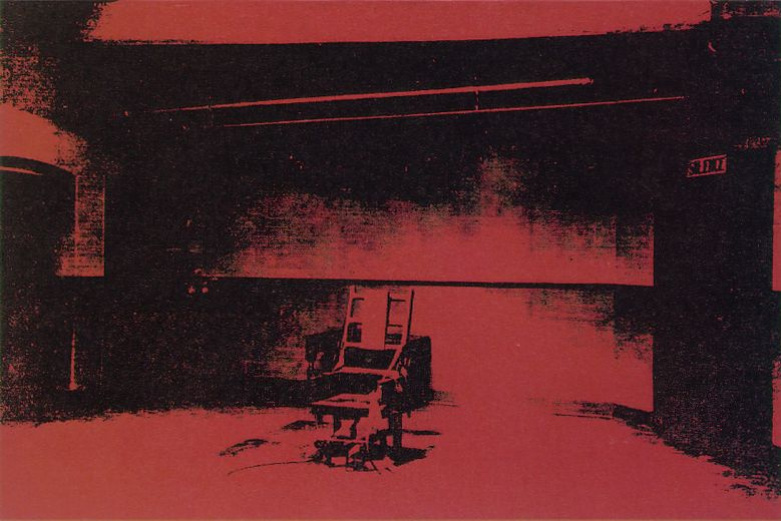log in
Enter site
Login to use Arthive functionality to the maximum
Pop-art
1,141 artworks, 132 artists
Pop art (short for popular art) is an art movement that arose in the early 1950s in England. It was based on the aesthetics of mass culture objects. This art style is considered as a branch of avant-garde. For the first time in art history, there arose the art movement that did not pursue the improvement of the spiritual and moral state of society – it was the artists’ reaction to the subjectless abstractionism and expressionism. The pop artists urged the society to return to reality.
In 1952, in London, artists E. Paolozzi and R. Hamilton created The Independent Group association to study advertising technologies and ways to influence the mass consciousness using images: emblems, logos, celebrity photos. Four years later, at the exhibition “This is Tomorrow” in Hollywood, the painters presented the paintings in a new style of pop art, which rapidly gained popularity in England and the USA. The consumer society enthusiastically accepted the “art of mass consumption”. In the 1960s, pop art became the most influential art movement, primarily due to its simplicity and accessibility. It offered people a bright aesthetics of consumer goods: cookie packages, packs of chips, chocolate, cans with carbonated drinks, etc. Advertising has become an art form. The style has been repeatedly criticized, recognized as tasteless, mediocre, banal and vulgar. Nevertheless, paintings, sculptures and other pop art works had a strong influence on the development of fashion and design in the late 20th — early 21st centuries.
Pop art paintings resembled advertising posters, the works were bright and striking. The muses of these artists were the Hollywood stars and heroes of the commercials, and the media were the source of the subjects. Creating their works, artists used the techniques of industrial advertising and design. Objects replaced the subjects: the paintings featured toys, tin cans, household appliances, characters of the comics and TV shows. In their works artists often included inscriptions, slogans, symbols, graffiti. Pop artists used collages, blends of objects and materials, they sought striking highlights. Acrylic paints, photo paper, glass, plastic, metal, and leather could coexist in one work. As a result, the “masterpiece” was a cocktail of colours, shapes, materials and techniques. The main concept of the work should follow a single rule – not to be boring.
Significant pop artworks:
diptych “Marilyn”, 1962, “One-Hundred Soup Cans”, 1962, “Black Lenin”, 1987 by Andy Warhol, “The Big Splash”, 1967 by David Hockney, “The Crying Girl”, 1963, “Still Life with Goldfish”, 1974, “Interior with an African Mask”, 1991, Roy Lichtenstein, “Baptism”, 1982 J.-M. Basquiat, Untitled (multi-coloured babies), 1988 by Keith Haring.
Pop artists:
The most famous pop art artists were Andy Warhol, Roy Lichtenstein, Tom Wesselmann, Jasper Jones, Keith Haring, Wayne Thibault, Jeff Koons, Yayoi Kusama.
In 1952, in London, artists E. Paolozzi and R. Hamilton created The Independent Group association to study advertising technologies and ways to influence the mass consciousness using images: emblems, logos, celebrity photos. Four years later, at the exhibition “This is Tomorrow” in Hollywood, the painters presented the paintings in a new style of pop art, which rapidly gained popularity in England and the USA. The consumer society enthusiastically accepted the “art of mass consumption”. In the 1960s, pop art became the most influential art movement, primarily due to its simplicity and accessibility. It offered people a bright aesthetics of consumer goods: cookie packages, packs of chips, chocolate, cans with carbonated drinks, etc. Advertising has become an art form. The style has been repeatedly criticized, recognized as tasteless, mediocre, banal and vulgar. Nevertheless, paintings, sculptures and other pop art works had a strong influence on the development of fashion and design in the late 20th — early 21st centuries.
Pop art paintings resembled advertising posters, the works were bright and striking. The muses of these artists were the Hollywood stars and heroes of the commercials, and the media were the source of the subjects. Creating their works, artists used the techniques of industrial advertising and design. Objects replaced the subjects: the paintings featured toys, tin cans, household appliances, characters of the comics and TV shows. In their works artists often included inscriptions, slogans, symbols, graffiti. Pop artists used collages, blends of objects and materials, they sought striking highlights. Acrylic paints, photo paper, glass, plastic, metal, and leather could coexist in one work. As a result, the “masterpiece” was a cocktail of colours, shapes, materials and techniques. The main concept of the work should follow a single rule – not to be boring.
Significant pop artworks:
diptych “Marilyn”, 1962, “One-Hundred Soup Cans”, 1962, “Black Lenin”, 1987 by Andy Warhol, “The Big Splash”, 1967 by David Hockney, “The Crying Girl”, 1963, “Still Life with Goldfish”, 1974, “Interior with an African Mask”, 1991, Roy Lichtenstein, “Baptism”, 1982 J.-M. Basquiat, Untitled (multi-coloured babies), 1988 by Keith Haring.
Pop artists:
The most famous pop art artists were Andy Warhol, Roy Lichtenstein, Tom Wesselmann, Jasper Jones, Keith Haring, Wayne Thibault, Jeff Koons, Yayoi Kusama.
Read more
Feed

